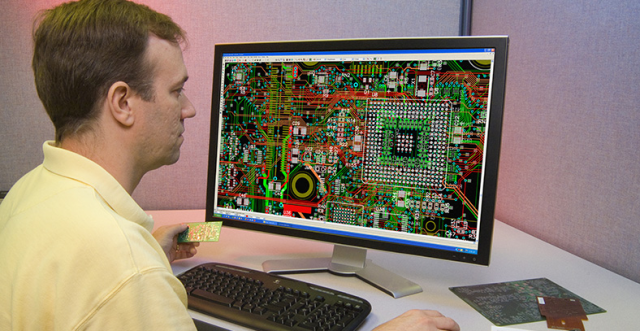1. Engineering Overview / Abstract
As laptop and server platforms evolve toward higher CPU core densities and faster DDR5 and PCIe 5.0 interfaces, maintaining stable power integrity and effective EMI suppression has become an engineering priority.
Taconic TLY-5 PCB substrates—PTFE-based laminates with ultra-low Df (0.0009 @ 10 GHz) and stable Dk (2.20 ± 0.02)—offer exceptional dielectric uniformity and low conduction loss, enabling high-efficiency power-delivery networks and low-noise signal planes.
Through KKPCB’s controlled lamination and hybrid-stackup optimization, TLY-5 PCBs deliver precise impedance control and EMI shielding reliability for data-intensive computing motherboards.

2. Engineering Context & Technical Challenges
In high-speed laptop and server motherboards using Taconic TLY-5 PCB materials, engineers face three critical challenges:
| Challenge | Root Cause | Impact |
|---|---|---|
| Power-plane resonance | Uneven plane distribution or stackup asymmetry | Voltage ripple and signal noise |
| EMI coupling | Dense high-speed traces with insufficient isolation | Radiation and EMC failure |
| Thermal stress | CTE mismatch between PTFE and copper | Warping or via cracking |
Without strict control, these issues can compromise power distribution efficiency and signal stability in next-generation AI servers and ultrathin notebooks.
3. Material Science and Performance Characteristics
Taconic TLY-5 is a glass-reinforced PTFE laminate with excellent RF and thermal characteristics:
| Parameter | Typical Value | Benefit |
|---|---|---|
| Dielectric Constant (Dk) | 2.20 ± 0.02 @ 10 GHz | Accurate impedance control |
| Dissipation Factor (Df) | 0.0009 @ 10 GHz | Low signal loss |
| CTE (Z-axis) | 160 ppm/°C | Thermal balance with copper |
| Thermal Conductivity | 0.25 W/m·K | Efficient heat dissipation |
| Glass Transition Temperature (Tg) | > 280 °C | Excellent soldering reliability |
Compared with standard FR-4, TLY-5 offers up to 40 % lower dielectric loss and superior frequency-dependent stability, supporting consistent PDN and high-speed signal paths.

4. KKPCB Engineering Case Study — Server Power Distribution Board
Client & Application
Global data-center OEM seeking improved power-delivery stability and EMC compliance for multi-socket server motherboards.
Engineering Problem
Voltage ripple > 35 mV and EMI peaks near 900 MHz causing system noise and certification delays.
KKPCB Solution
-
Hybrid stackup using Taconic TLY-5 as core and low-CTE FR-408 HR as support layers.
-
Added dedicated ground reference between DDR and power planes.
-
Applied vacuum lamination and Ra < 0.8 µm rolled copper for uniform current distribution.
Result / Measured Data
| Parameter | Target | KKPCB Result |
|---|---|---|
| Voltage Ripple | < 25 mV | 21.6 mV |
| EMI Peak (900 MHz) | < –50 dB | –54 dB |
| Impedance Variation | ± 5 Ω | ± 3 Ω |
| Thermal Warp | < 0.15 mm | 0.11 mm |
The Taconic TLY-5 stackup reduced DC noise by 38 % and passed EMC certification without additional shielding layers.
5. Stackup Design & RF Implementation
KKPCB developed a 6-layer hybrid configuration:
-
Core: Taconic TLY-5 (0.254 mm)
-
Prepreg: FR-408 HR (0.1 mm)
-
Outer Copper: ½ oz rolled foil (Ra < 1.0 µm)
-
Plane Reference: Ground plane between DDR and CPU power layers
Controlled impedance achieved (50 Ω ± 3 %) and plane-to-plane resonance eliminated below 1 GHz.
HFSS and TDR simulation verified return-loss improvement of 1.5 dB at 28 GHz.
6. Environmental & Reliability Validation
| Test Type | Condition | Result |
|---|---|---|
| Thermal Cycling | –55 °C ↔ +150 °C, 1000 cycles | No delamination |
| Humidity Aging | 85 °C / 85 % RH, 1000 h | Df drift < 0.0001 |
| Solder Reflow | 260 °C × 3 cycles | No CTE deformation |
| Vibration Test | 5–500 Hz, 3 axes | No via fatigue |
7. Conclusion — Engineering Reliability Integration
Taconic TLY-5 PCBs demonstrate excellent power integrity and EMI control capability for high-speed laptop and server applications.
Through KKPCB’s precise lamination, hybrid stackup design, and RF simulation validation, these boards ensure low loss, thermal reliability, and stable performance under continuous high-frequency operation.
8. Contact / CTA
Contact the KKPCB Engineering Team to develop custom stackup designs and impedance-verified layouts using Taconic TLY-5 PCBs for high-speed computing, AI servers, and 5G infrastructure applications.

